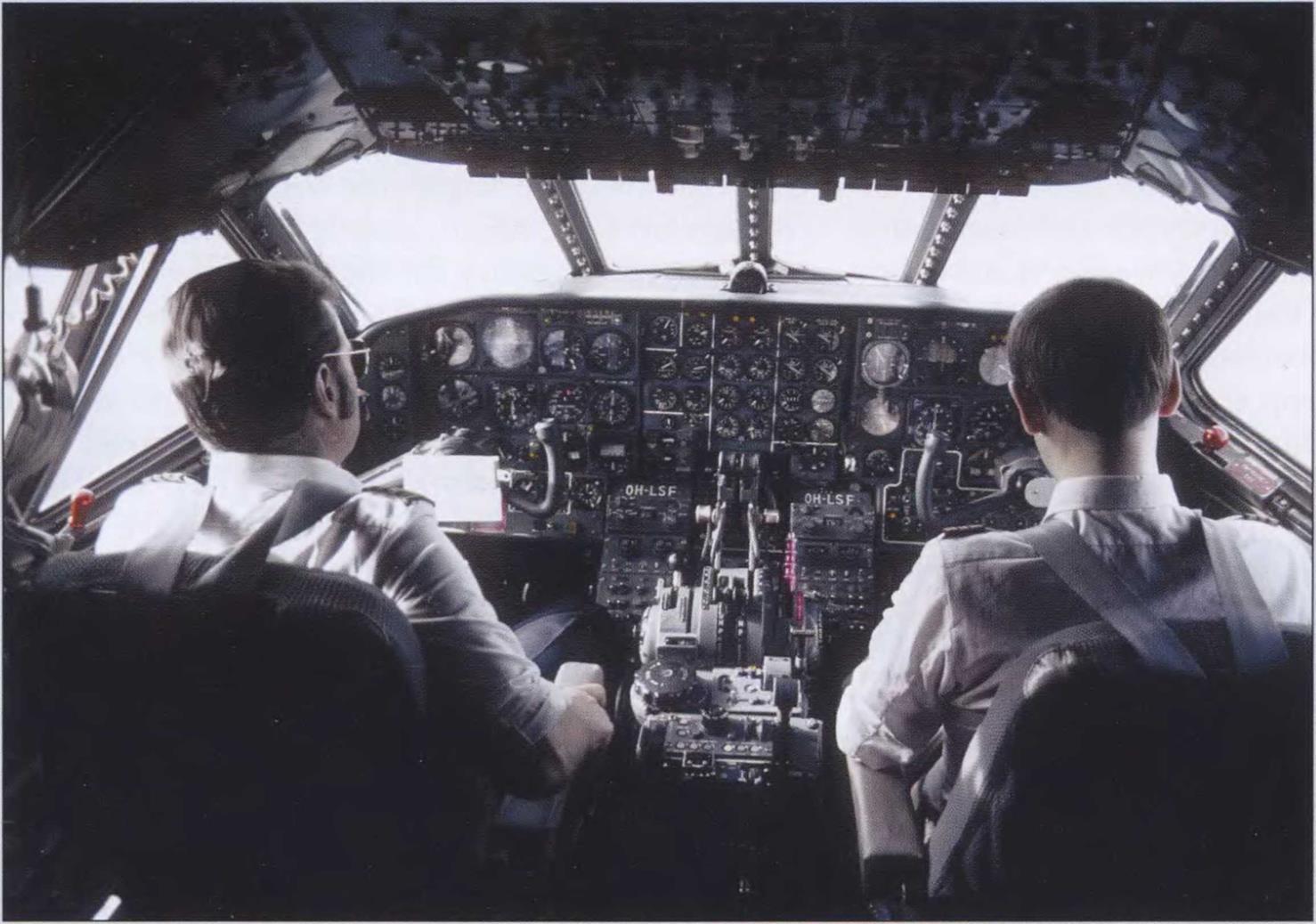WELCOME ABOARD THE CARAVELLE
By Mike Machat
|
F |
or some reason you can tell quite a lot about an airplane just from the way it rides while taxiing on the ground. The loping and almost floating sensation of the great Douglas propliners was decidedly different than the stiffer ground ride of the Constellation with its tall, slim nose gear for instance. But all that gave way to a more “riding-on-rails” sure-footedness when the new jets entered service. Taxiing along in the Sud Caravelle felt like the best of both worlds, as the ground-handling attributes of the low-slung jetliner were enhanced by its rugged four-wheel-bogey main landing gear. The airplane feels well planted on the ground; much the way a wide-track luxury sedan feels at speed on a freeway or autobahn.
With its low wing and ample flap area, the Caravelle s takeoff is nothing less than regal. The airplane’s large semi-swept wing has an “iron leading edge” (meaning no lift-enhancing leading-edge flaps or slats), yet the Caravelle handles beautifully at approach speeds and all the way down to the runway. Slotted sailplane-like spoilers also give the pilot precise control for the airplane’s rate of descent without appreciably adding to or depleting its airspeed. The
Caravelle was always a favorite with its pilots, from the original “steam-powered” models, as they were affectionately called, to the more advanced version flown by United Air Lines. Passengers benefited from this new jet experience as well, with a significantly quieter cabin, thanks to the aircraft’s rear-mounted engines, and of course, those huge triangular-shaped windows placed strategically at every seat row.
|
Passengers board a Finnair Caravelle on a regional flight from an outlying smaller city to Helsinki, Finland. (Mike Machat) |
 With the original Caravelle cockpit and nose section having been literally grafted onto the fuselage from Britain’s de Havilland Comet, French engineers at Sud-Est realized that a modernization was required as the aircraft became more advanced in the early 1960s.
With the original Caravelle cockpit and nose section having been literally grafted onto the fuselage from Britain’s de Havilland Comet, French engineers at Sud-Est realized that a modernization was required as the aircraft became more advanced in the early 1960s.
With United’s order for the Vl-R model, a new enlarged wind – shield and improved instrument panel layout was designed,
and here are the results. Cockpit visibility was nearly doubled, and cockpit ergonomics were enhanced greatly as well. Pilots the world over loved to fly the airplane. (Mike Machat)











